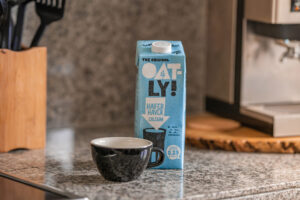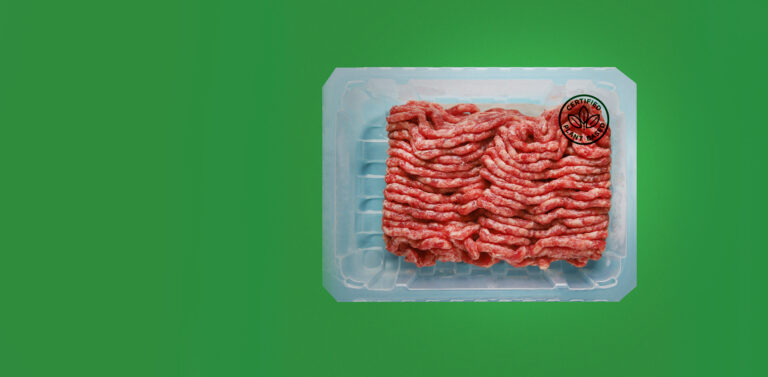Alt-Milks, mylks, plant-based milk, however you name it, this category is continuing to grow exponentially year after year.
Leading the charge, Oat milk is surging ahead as the number one fastest-growing product and has found a place as the number two alternative to milk behind Soy, already representing a quarter of the ‘dairy alternative’ market’s value globally, fast approaching $4 Billion in annual sales.*
This tremendously popular alternative to dairy first garnered the attention of baristas, to this day its greatest advocates, and quickly became the subject of discussions on podcasts the world over.
If Oat Milk as a trend feels a bit dated, that’s because it is.
Oat Milk isn’t trendy, it’s here to stay, but what’s interesting is why we’ve made the switch; why we’ve moved away in droves from our beloved (and well-advertised) dairy milk – the drink that’s given out in playgrounds all over the world and touted as one of the single greatest nutritional components of any diet.
[*Source: IBIS World]
A Milk Mystery
Remember ‘Got Milk’ ads? I feel even talking about the success of those ads dates me in ways I would rather not think about because they were ads for me, ads lining the Sports Illustrated Kids

Magazines stacked in the corner of my room, cutouts of Serena Williams, Kobe Bryant, and Derek Jeter with their milk mustaches taped to the wall above my bed. It was milk they told us would take us to these heights, milk turned kids like me into heroes! (we may ultimately find out, maybe, milk was the reason The Hulk looked that terrible).
Milk was king, the unquestioned best option when it came to health after water. Then one day we just turned our backs and we’ve been looking for the perfect replacements ever since.
Our relationship with milk was strong, bonded with millions of dollars in advertisements and aspirations for some better future. We’ve broken free for alternatives which we believe are better, and maybe make us feel like better people for using and understanding those as motivations behind the switch is just as, if not more important as understanding what people switched to.
Why did we switch?
Milk became a choice. It became something we gave time and thought to; either proactively or reactively. And the fast-growing alternative/plant-based milk category only gave us more food for thought.
The switch to plant-based milk has been led by a few things, new information and new technology have allowed us to make choices about our lifestyles; changes in mindset toward dairy and the dairy/meat industry, the rise of consistently available alternatives, shifts to more vegans based diets, social pressures, etc. With a sizable number of those highlighting the underlying environmental and sustainable reasoning for their decision making.
A study of what motivates people to engage in sustainable living actions, including and beyond environmental motivations first done by SITRA and modified for the Canadian market by One Earth looked at people’s motivations and helped identify a framework for how they make decisions. The study broke down the motivations into seven profiles by looking at their consumption.
- Traditional Voice of Reason
- Resourceful Eco-Warrior
- Impulse Buyer
- Day to Day Survivor
- Comfort Seeking Hedonist
- Trend-Setting Feel-good Green
- Tribal Follower
Oat milk satisfies the criteria for several profiles, in fact, five out the seven. Meaning there are many different things motivating people towards the category and industry.
Whether you are a Tribal Follower who jumped on the trend because your friends tell you it’s the best tasting option, or you are an eco-warrior and looking for an alternative to the California starving, almond milk, companies like Oatly (A milk made for humans) and OatUp and Dirty Clean Foods (using regenerative farming methods) have made options for you.

We learn very little in our lives and change even less, so when looking at the incredible leaps alternative milks have made in the industry, understanding the consumer’s mindset and decision-making framework is paramount. Understanding why the shift happens as well as where the shift takes them.
In all situations, new information influences the choices we make, but the framework and mindset within which we make decisions persists.
Questions to ask yourself and your brand.
- Do you understand what’s truly motivating your consumers as they consider adopting a new sustainable consumption behavior? What role does the new behavior (or product) play within the broader picture of their lives?
- How many of the above motivations around sustainable actions does your brand satisfy? What about your competition?
- How can you broaden the appeal of your brand or product to capture all the things that make people choose you?
- How have you positioned your brand to align with the needs of people today and to stave off future competitors?


